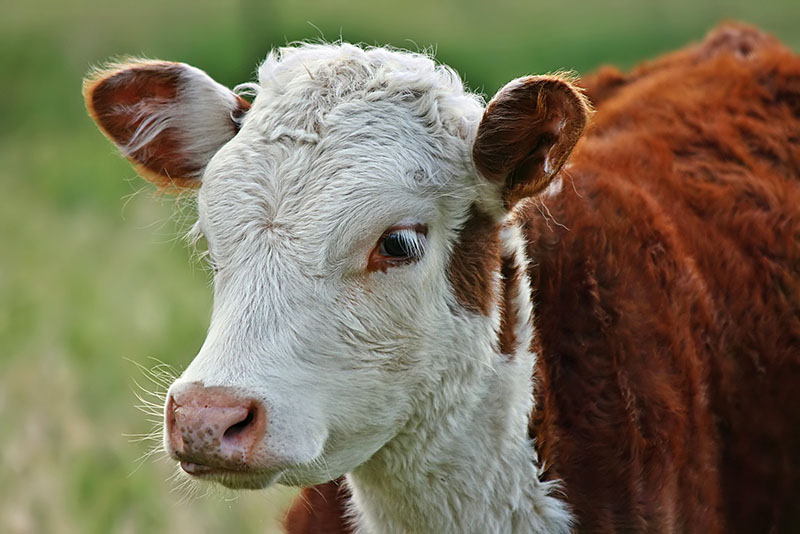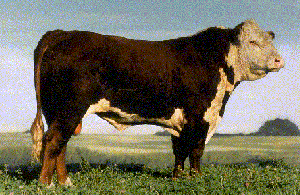Polled Hereford
Polled Herefords represent the development of an idea - an idea spawned in the minds of a small number of Midwestern
Hereford breeders in the late 1890s who realized that it was both possible and practical
to develop "modern Herefords minus horns."
development of an idea - an idea spawned in the minds of a small number of Midwestern
Hereford breeders in the late 1890s who realized that it was both possible and practical
to develop "modern Herefords minus horns."
These breeders were motivated by the promising prospect of developing Herefords with outstanding beef-producing characteristics, but with the added desirable trait of being naturally hornless. They planted the seed from which grew a new giant in the American and world beef cattle industry.
The Polled Hereford of today is the result - a modern, practical breed of cattle that has experienced widespread acceptance and desirability.
Polled Herefords were developed from the horned Hereford breed which was founded in the mid-18th century by the farmers of Hereford County, England. Among the horned Herefords an occasional calf would be born which did not develop horns. This change from parents' characteristics is known as a "mutation." These cattle soon came to be called "polled," which means naturally hornless.
Warren Gammon, a young Iowa Hereford breeder from Des Moines, originated Polled Herefords. He seized upon the idea of producing the hornless cattle after seeing some on exhibition at the Trans-Mississippi World Fair in Omaha, Nebraska, in 1898.
 Three years later, Gammon established the Polled Hereford breed registry with 11 head
of naturally hornless whiteface cattle he had located and purchased. These Herefords
were registered in the American Hereford Association, but were not identified as to
their polled characteristic. Therefore, Gammon formed the American Polled Hereford
Cattle Club to maintain a separate record of purebred Polled Hereford registrations.
Three years later, Gammon established the Polled Hereford breed registry with 11 head
of naturally hornless whiteface cattle he had located and purchased. These Herefords
were registered in the American Hereford Association, but were not identified as to
their polled characteristic. Therefore, Gammon formed the American Polled Hereford
Cattle Club to maintain a separate record of purebred Polled Hereford registrations.
Thus, in 1901, the Polled Hereford breed came into being with 11 registrations on record. In 1907, the pioneer breeders of Polled Herefords incorporated their organization, with headquarters in the Gammon home in Des Moines. Gammon served as executive secretary until 1921.
Today the Polled Hereford registry is combined with the American Hereford Association.
